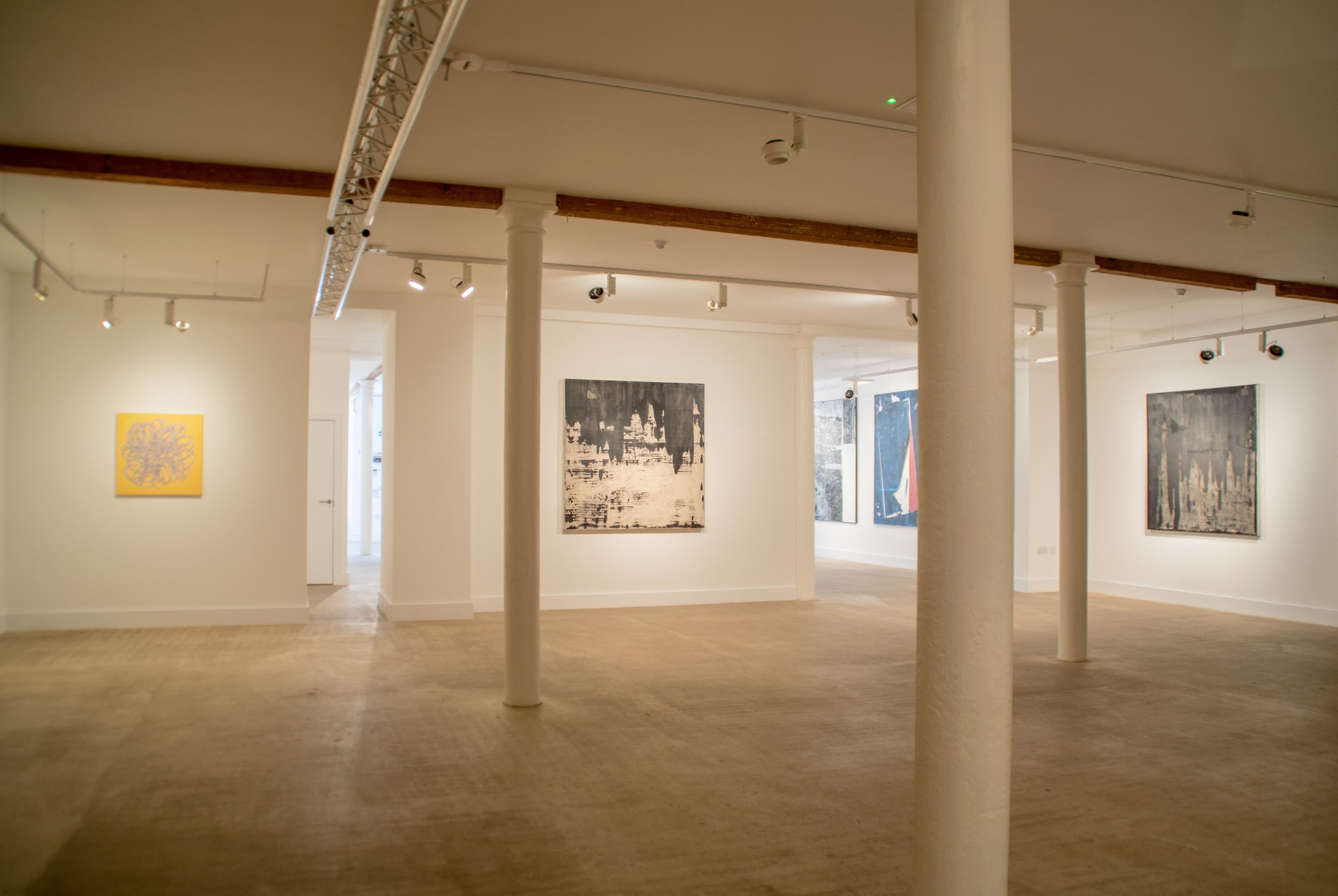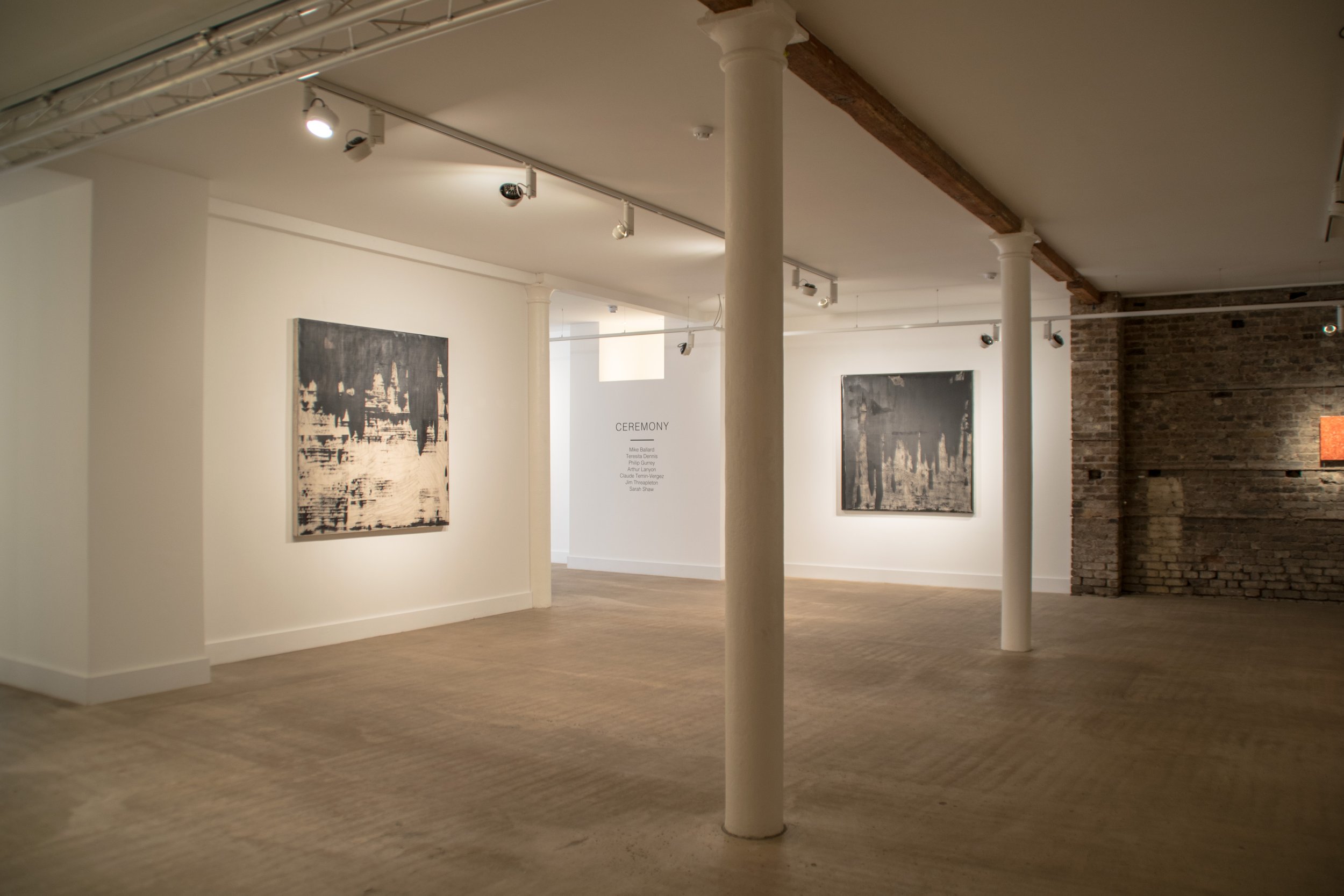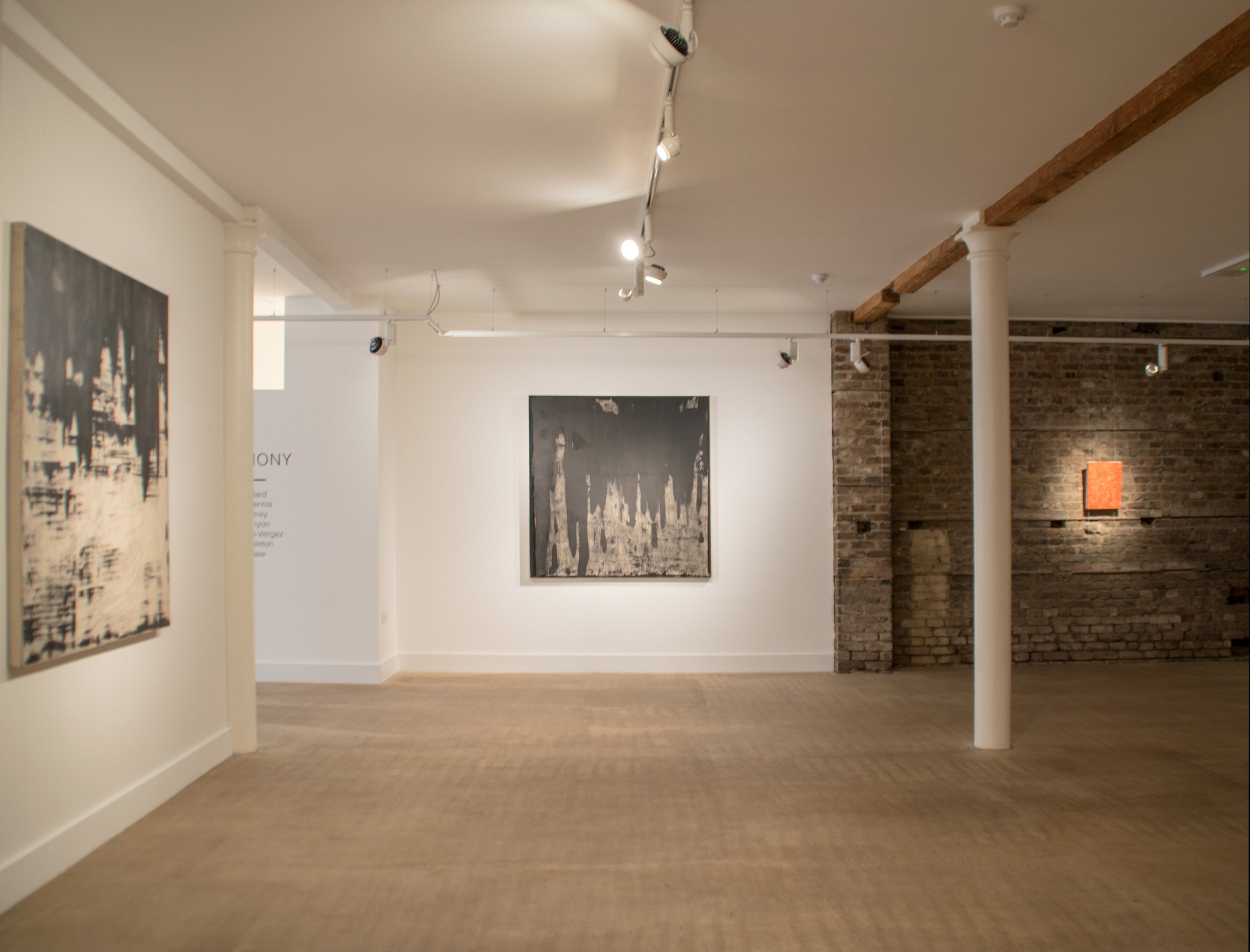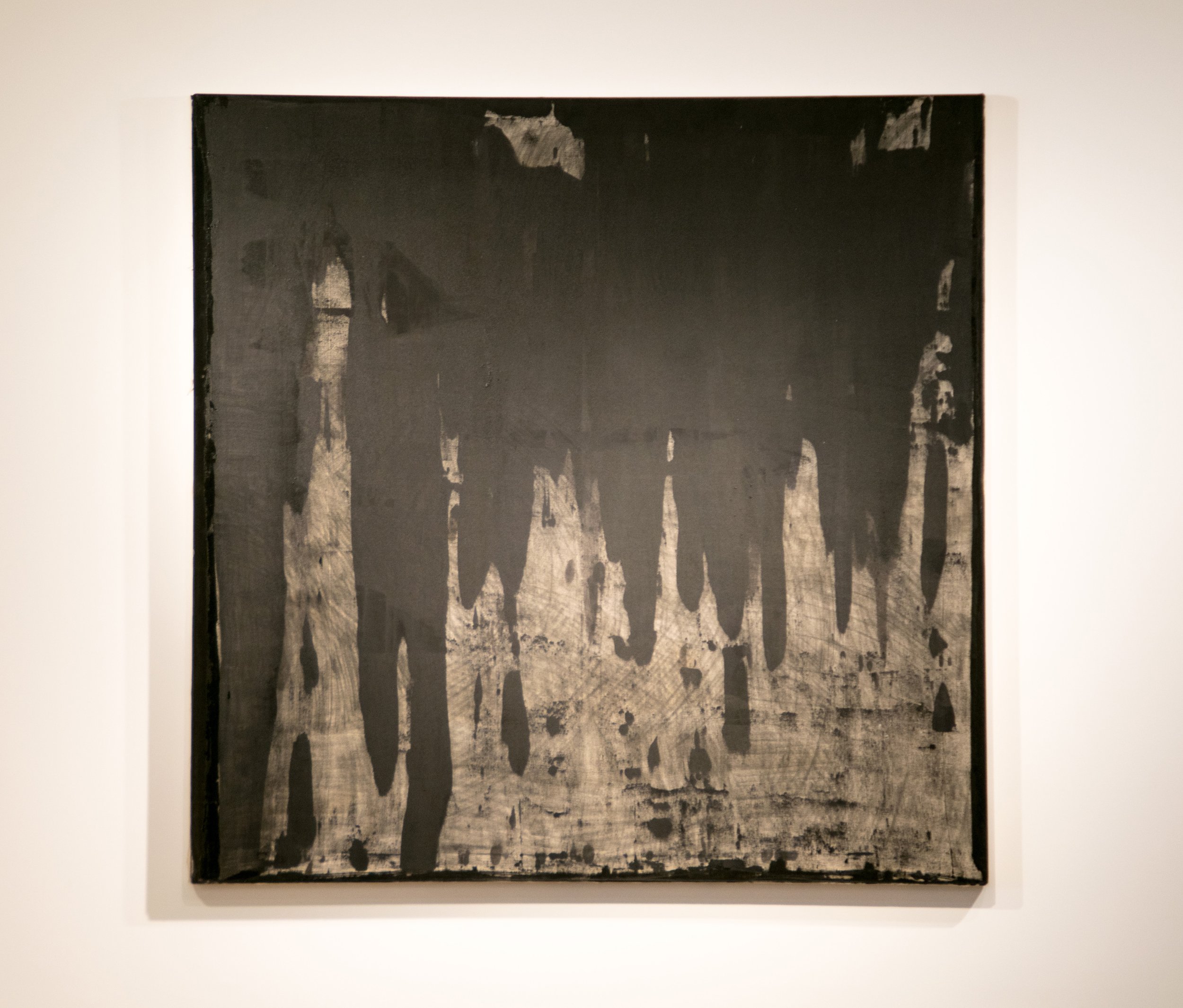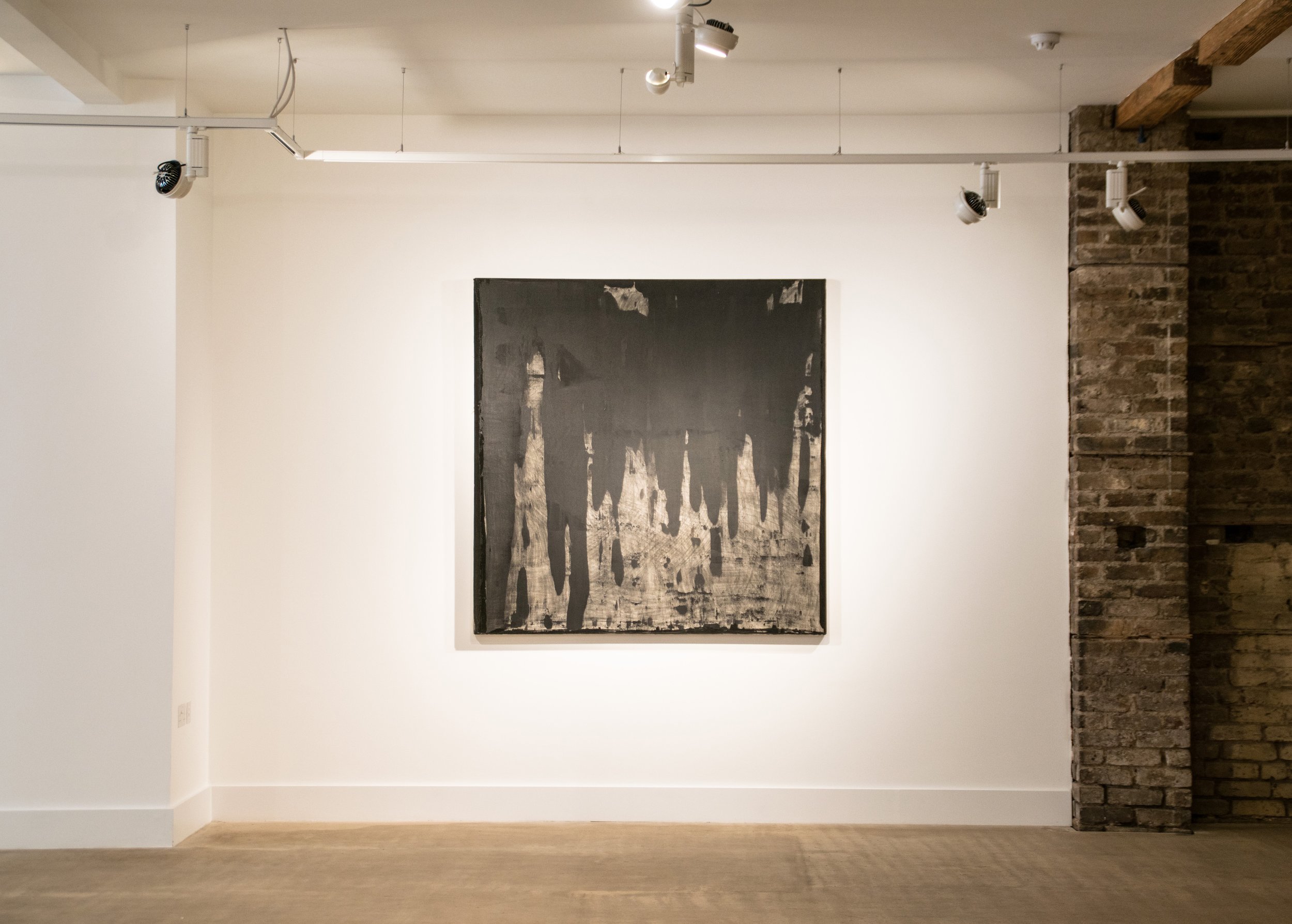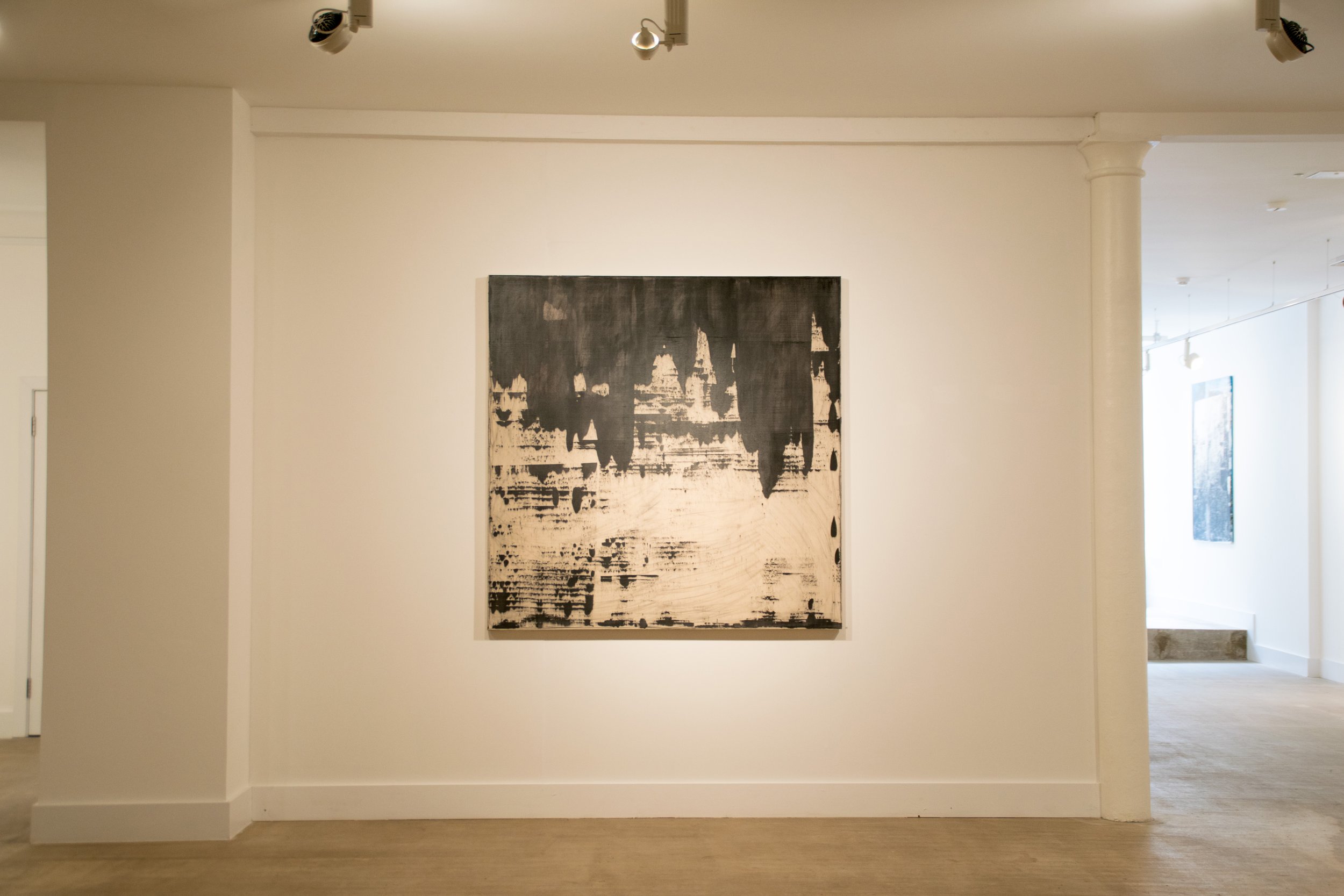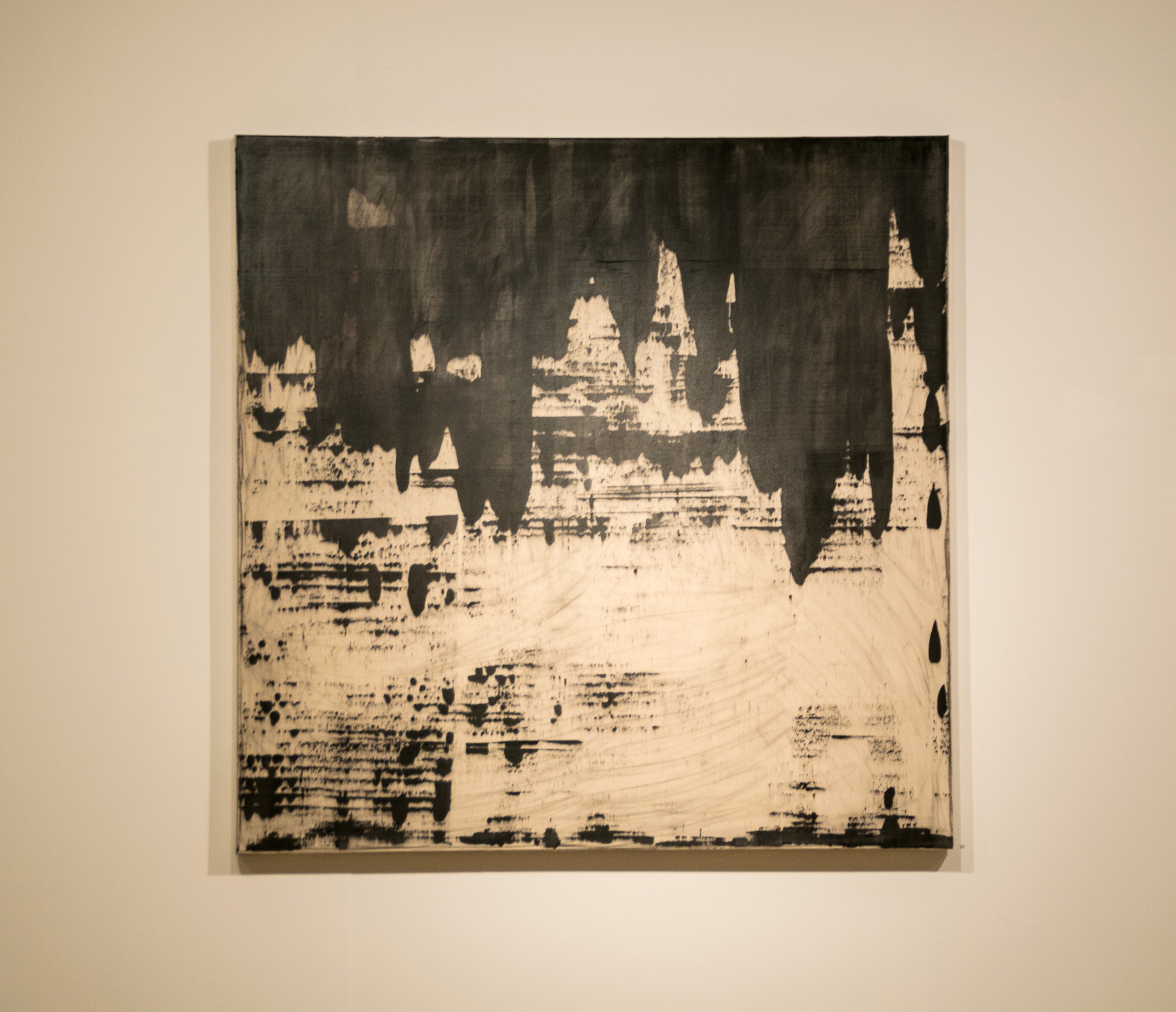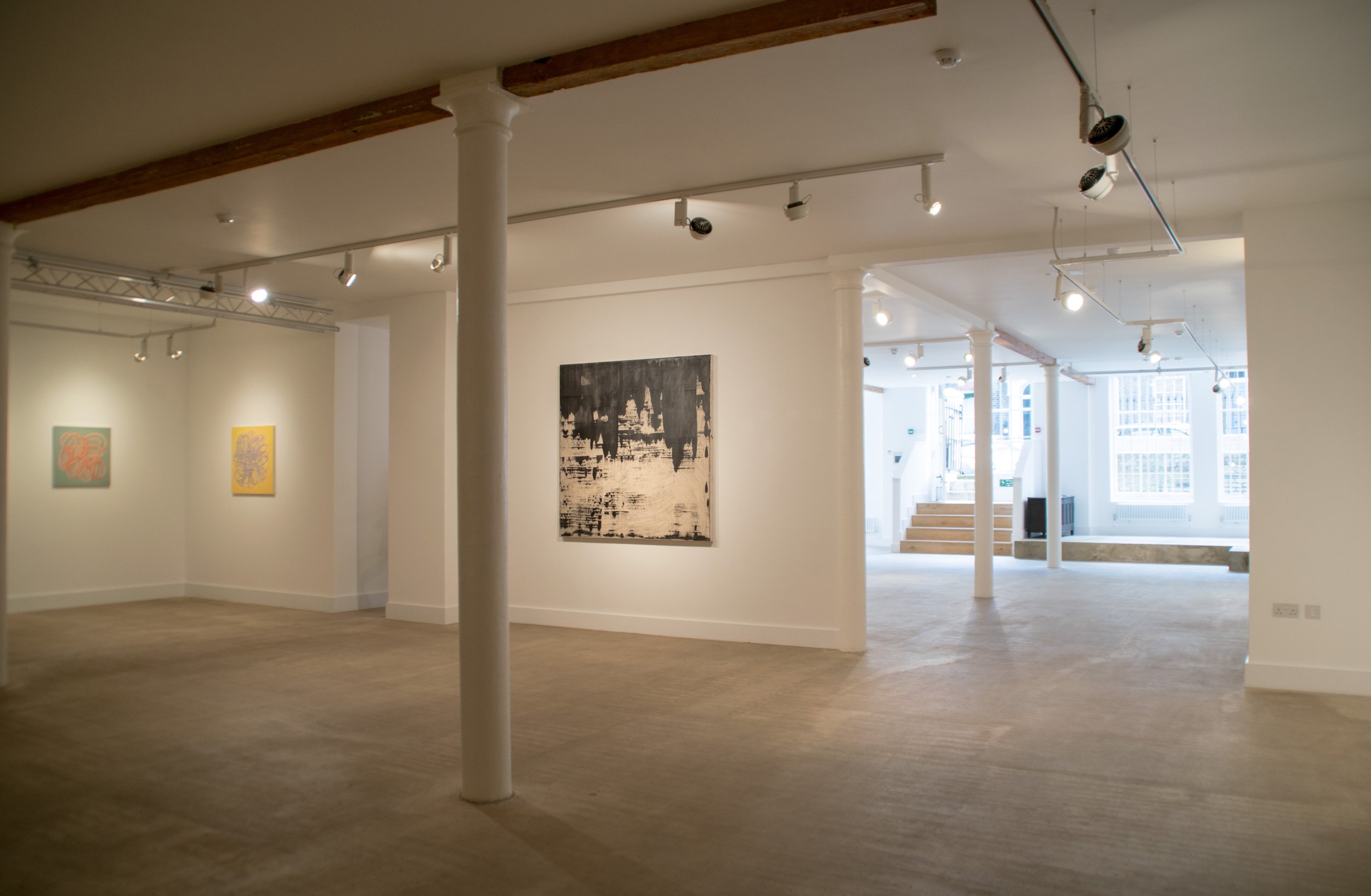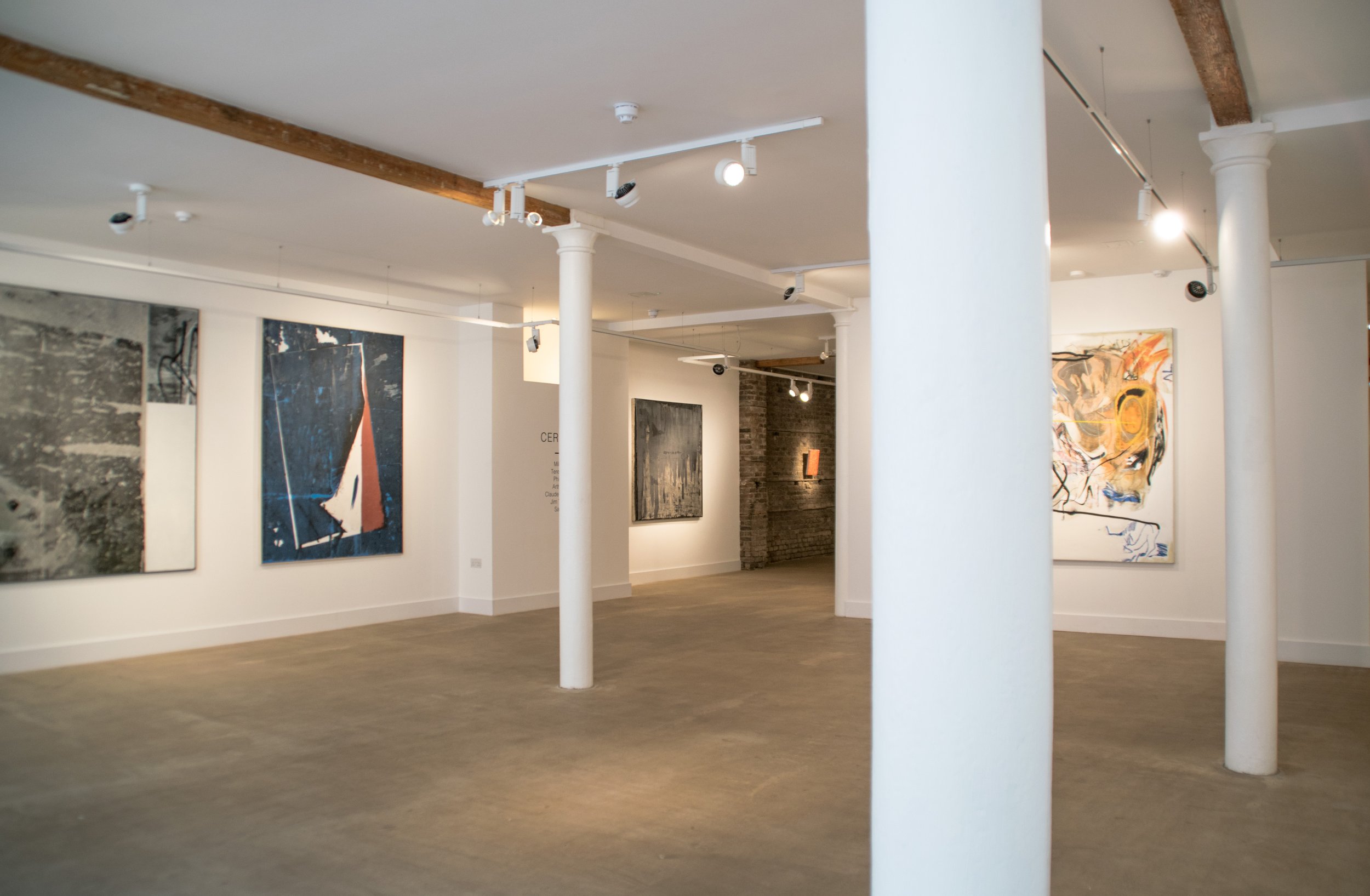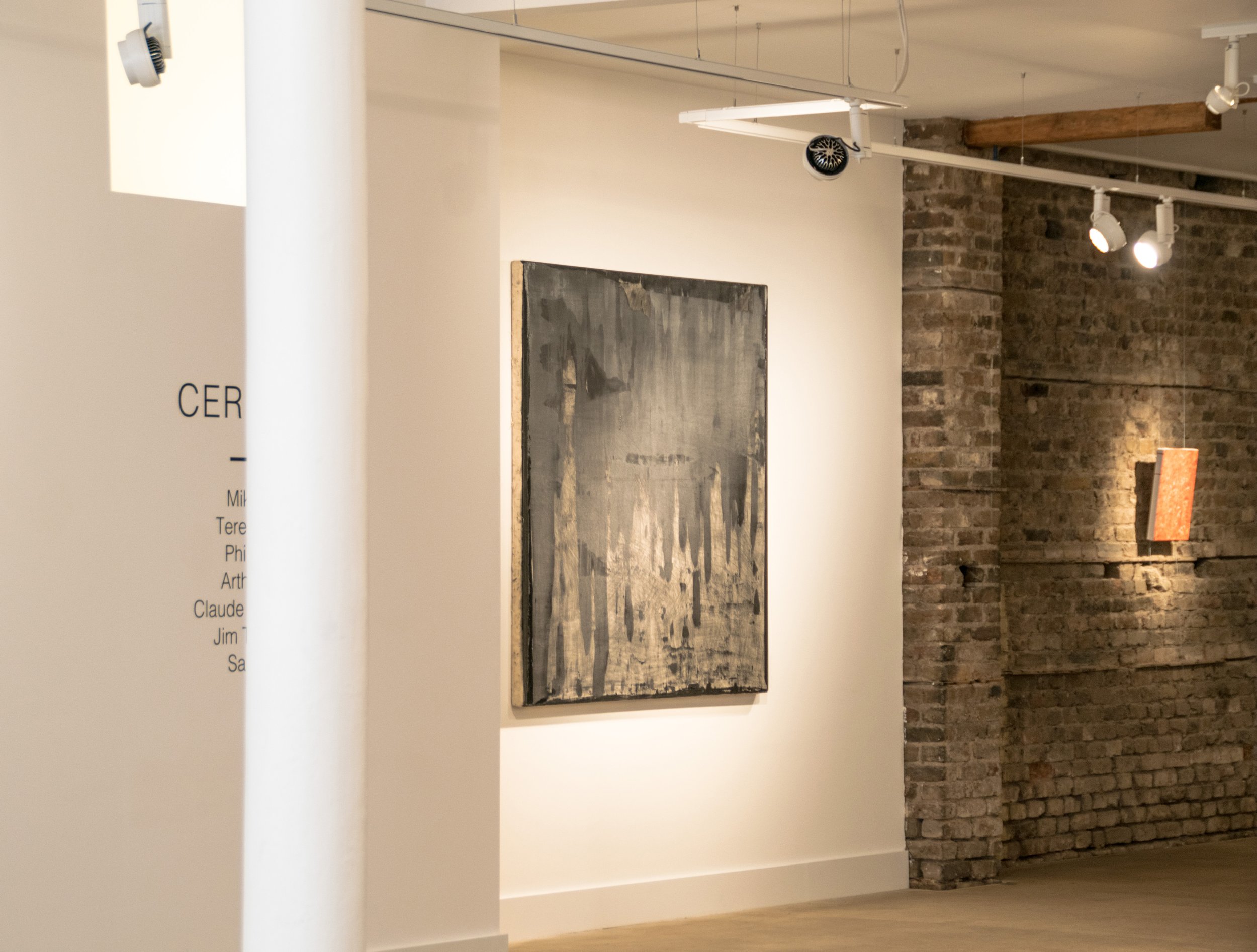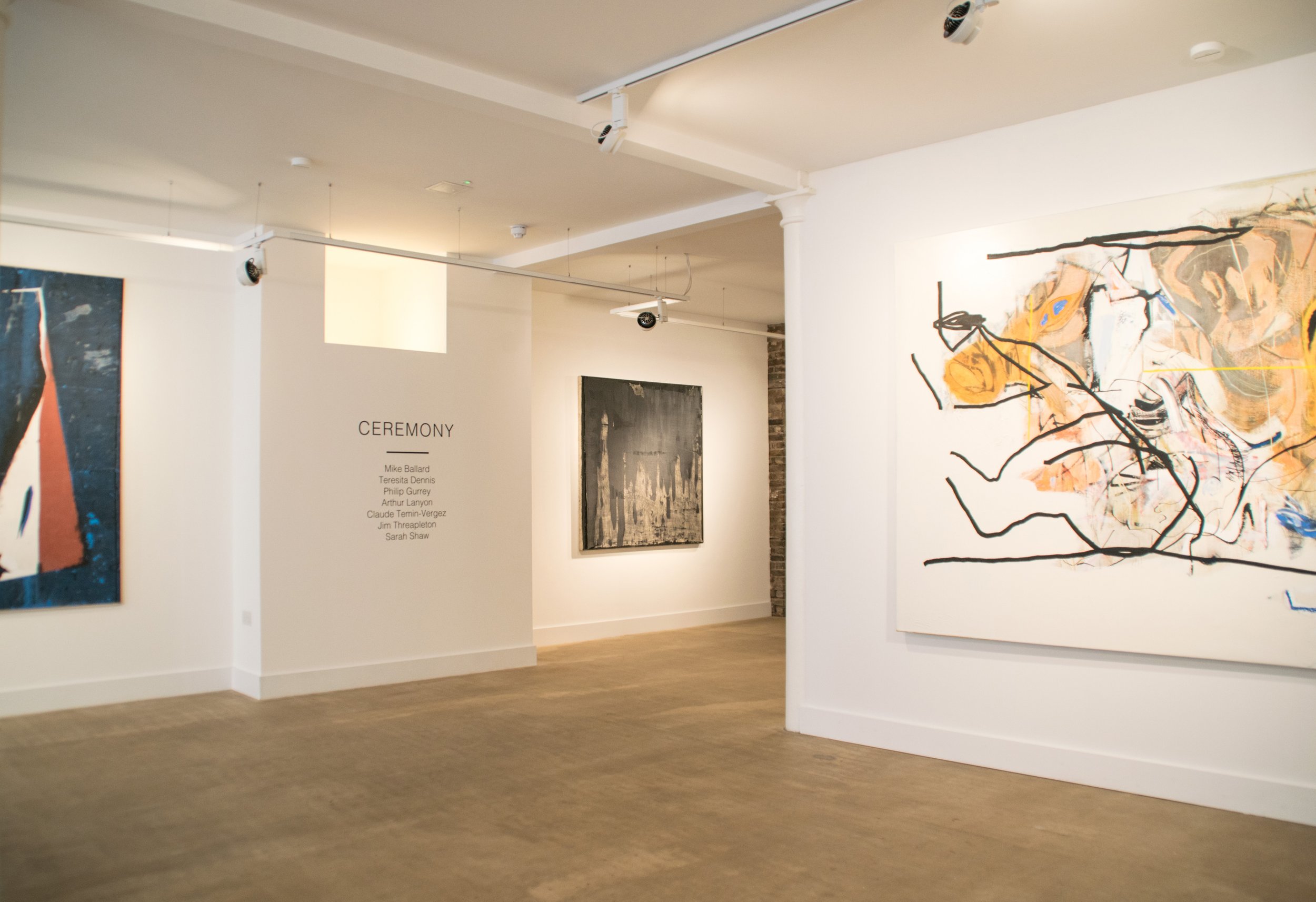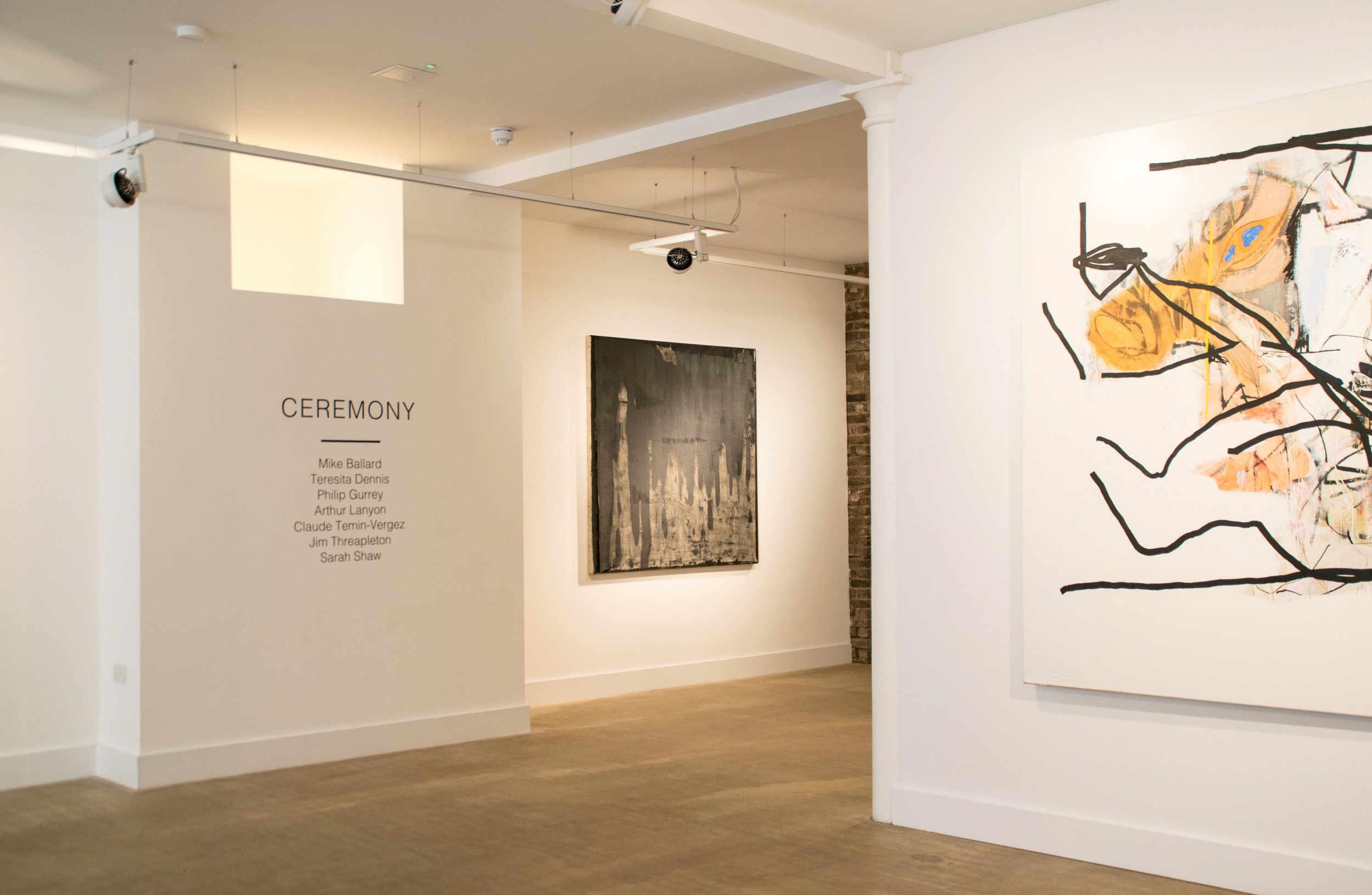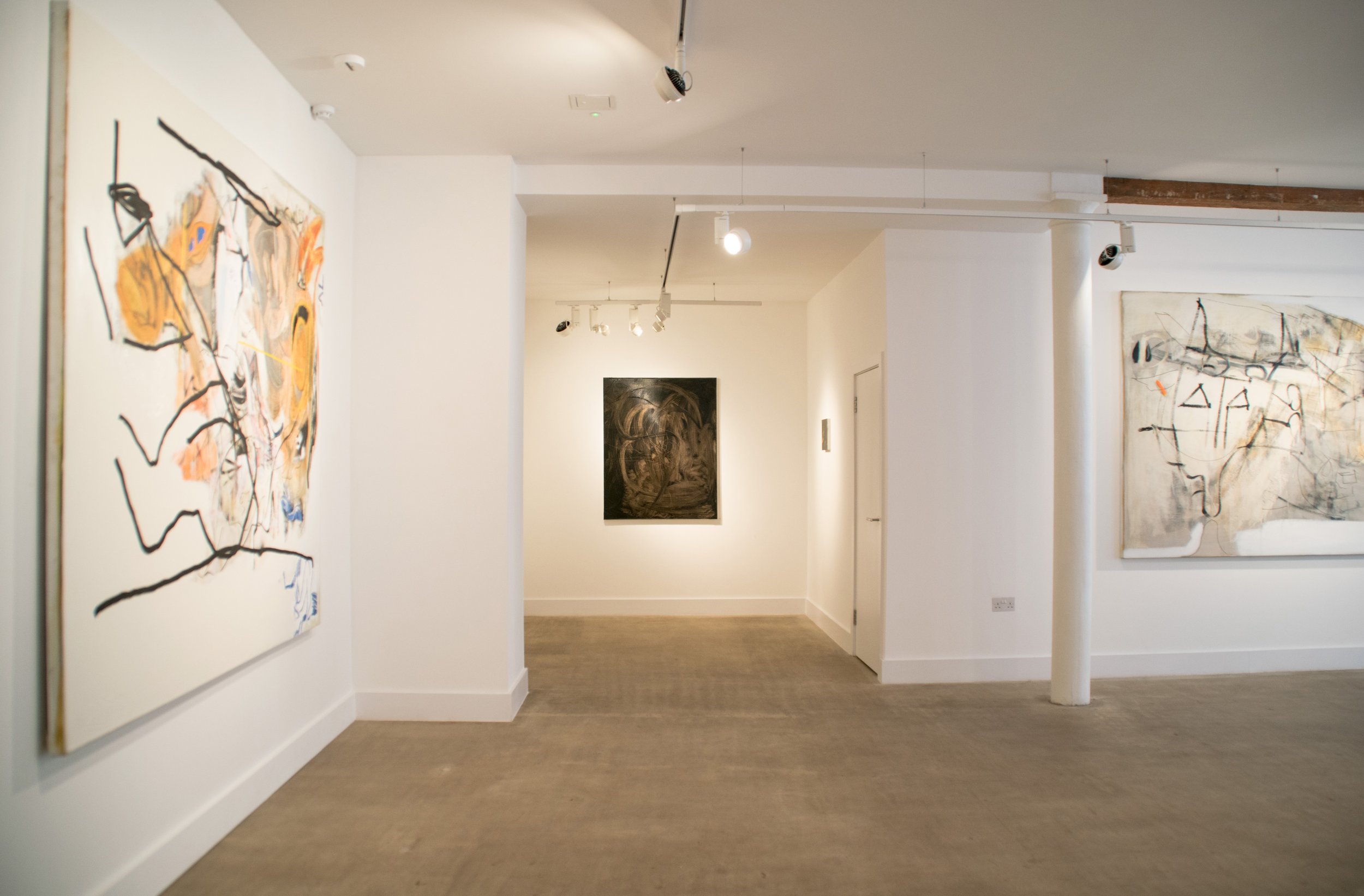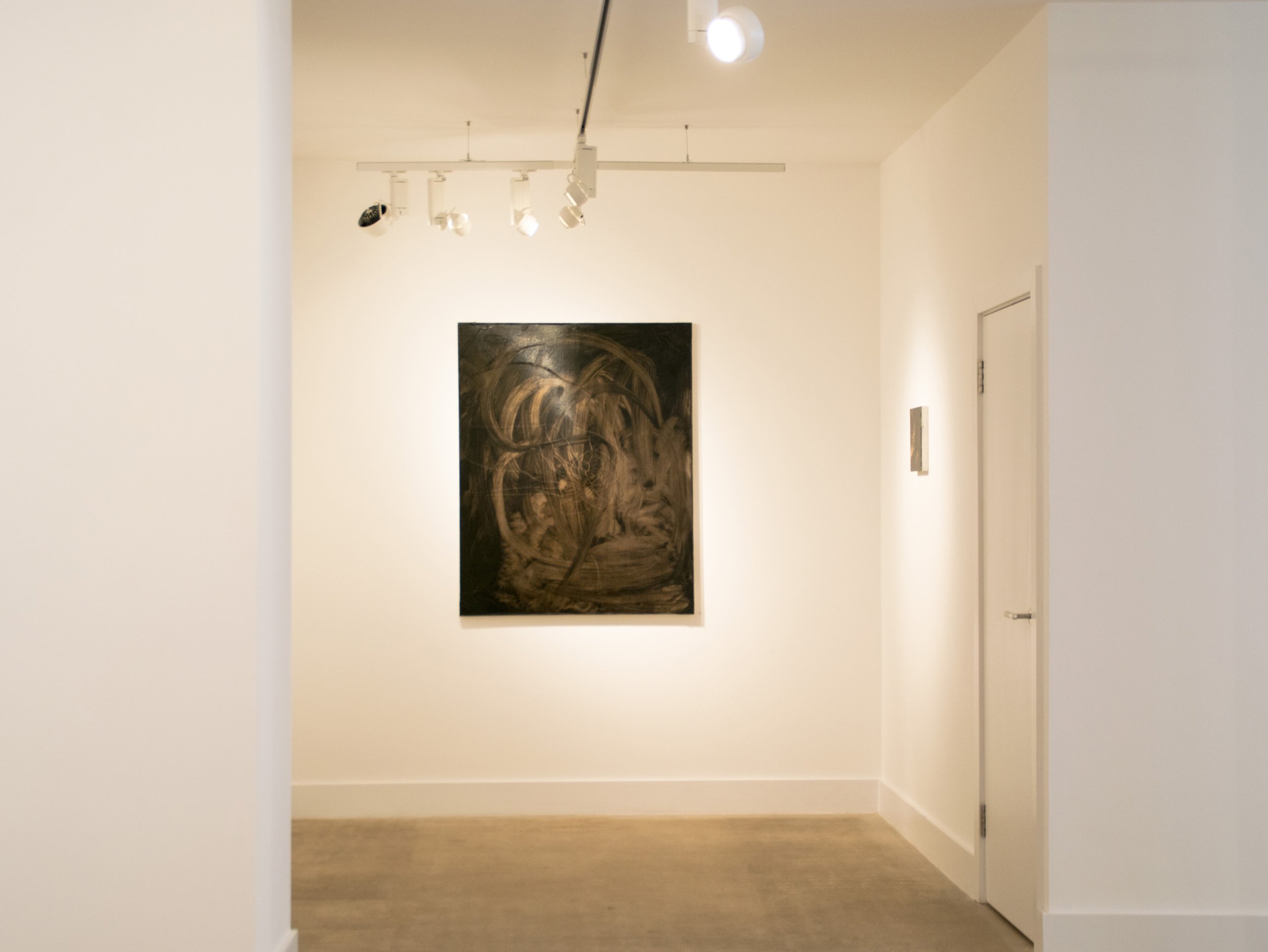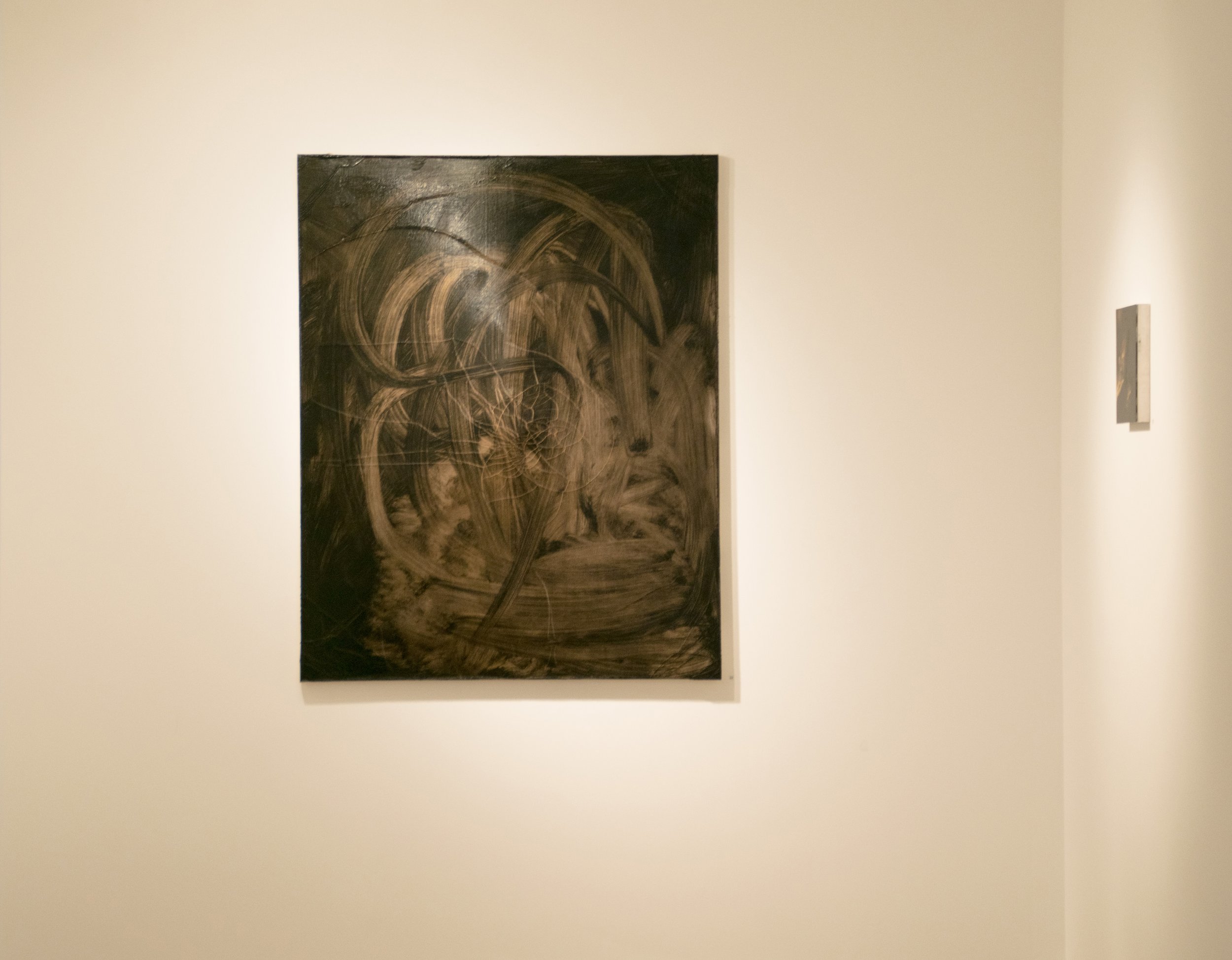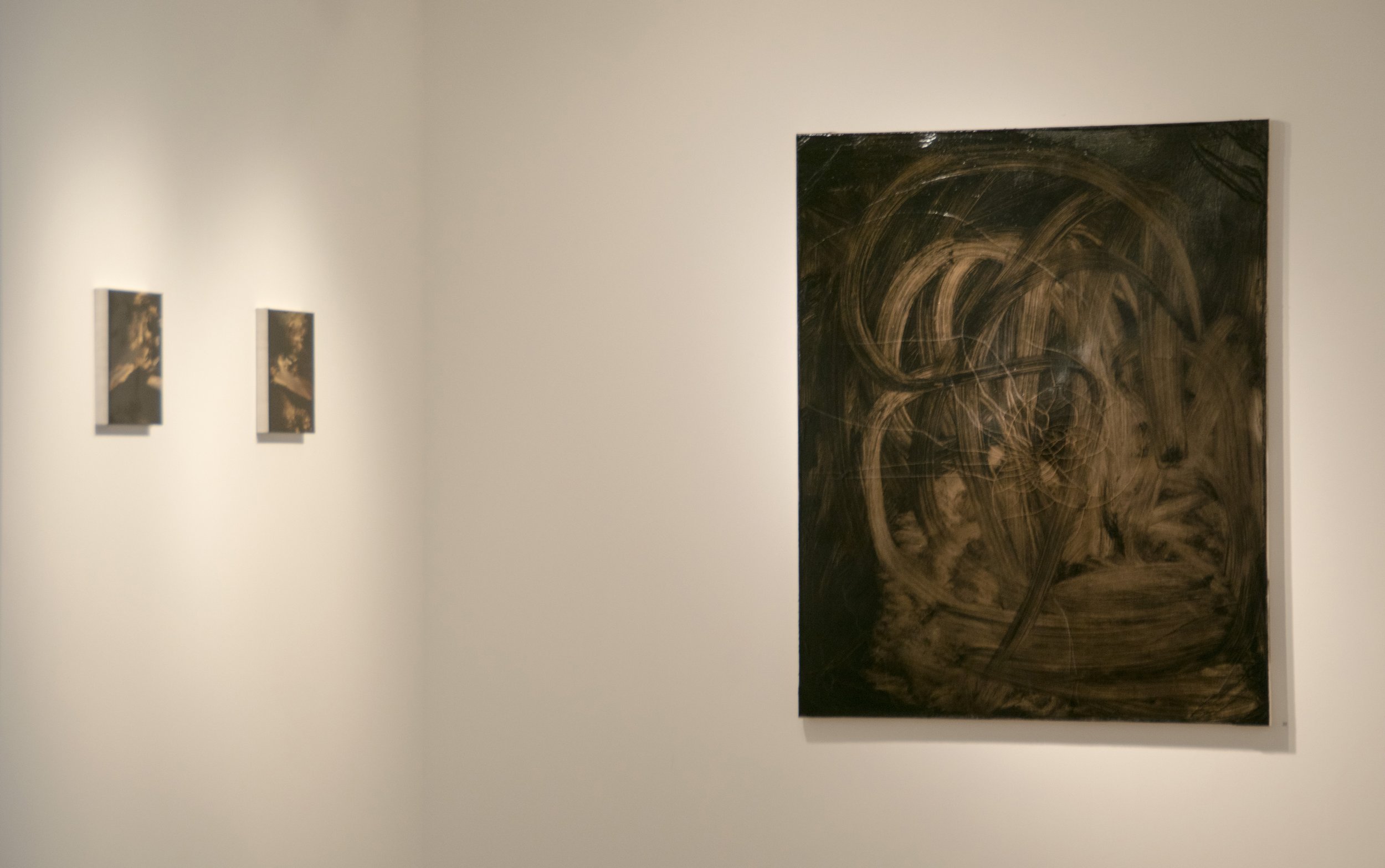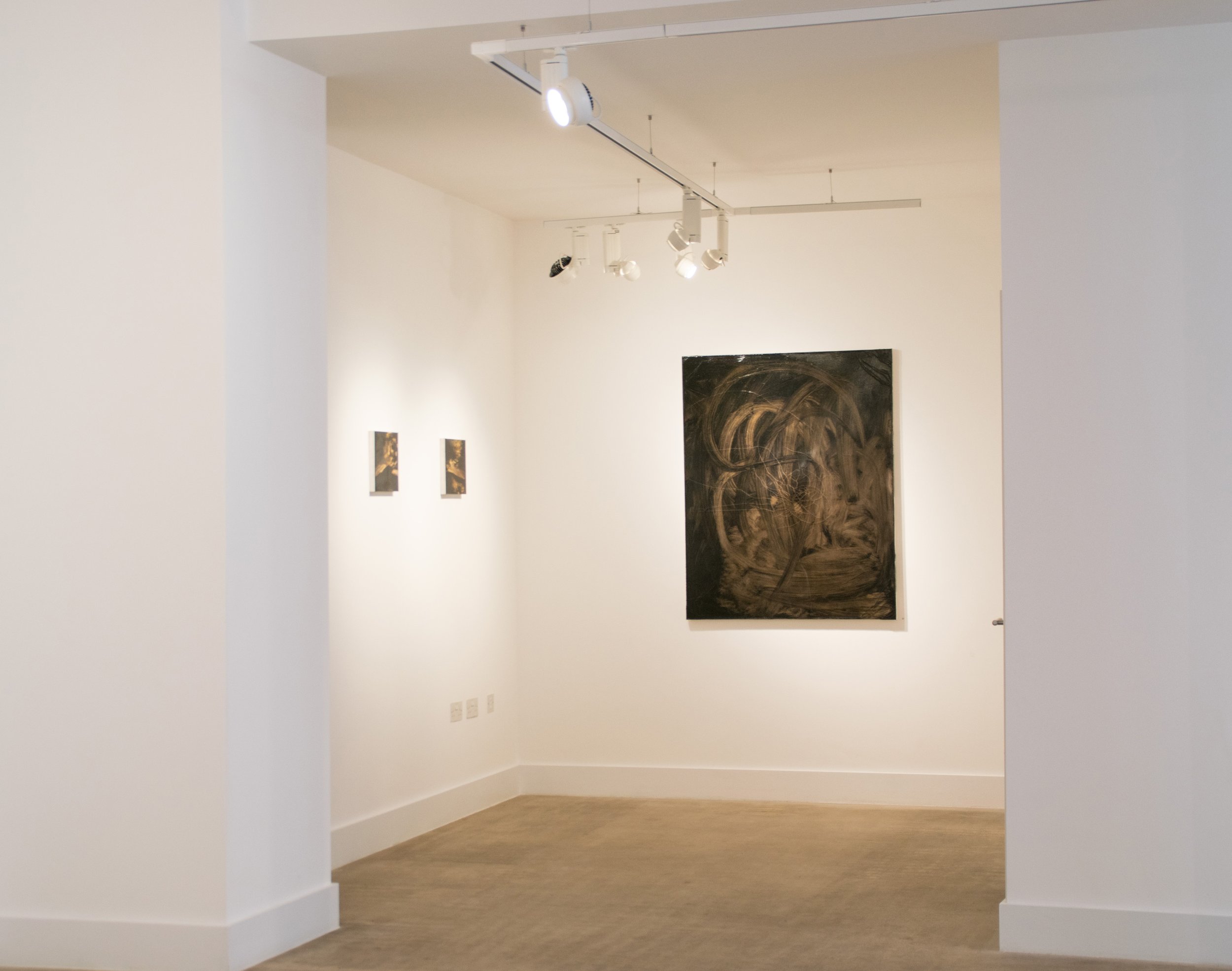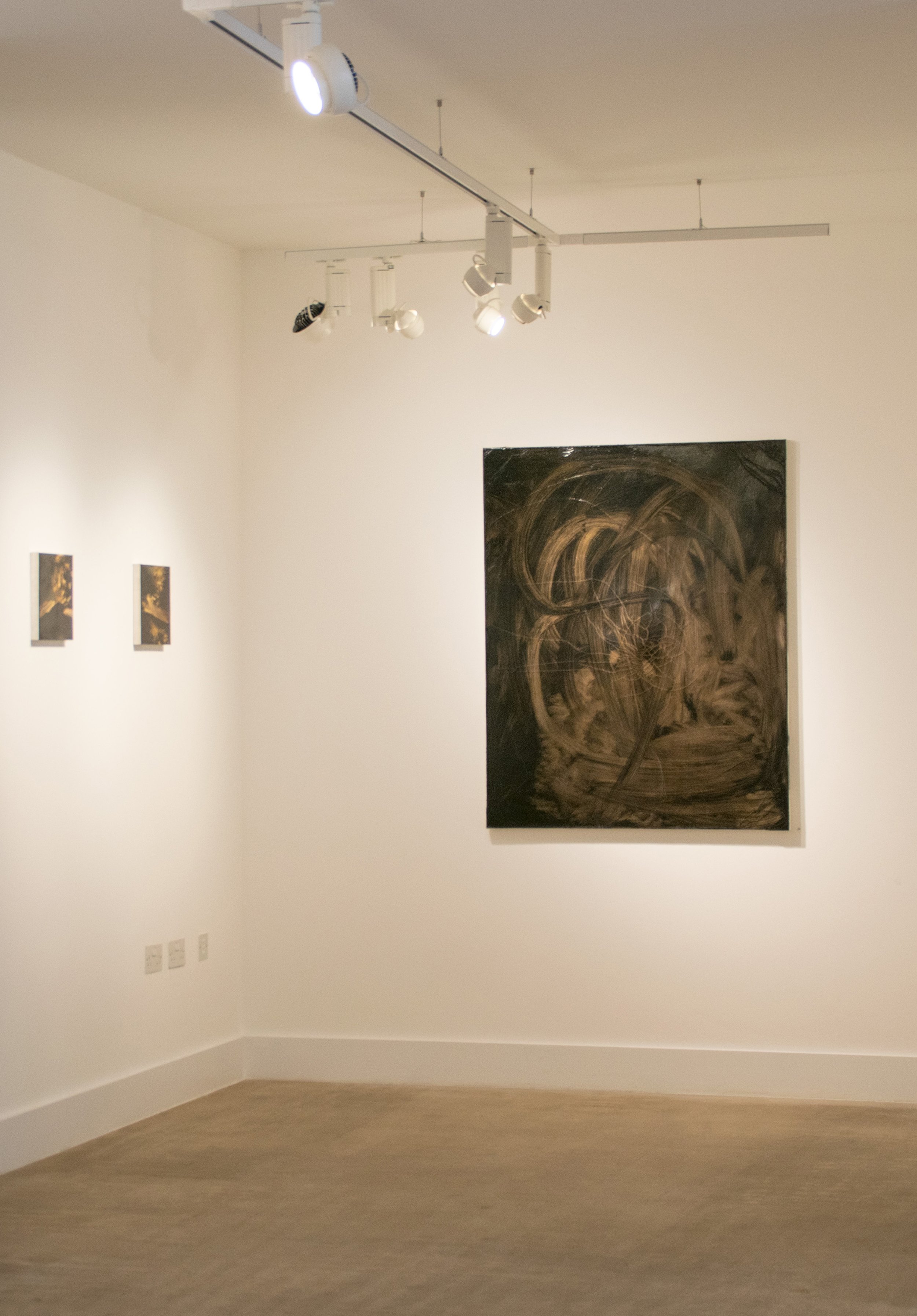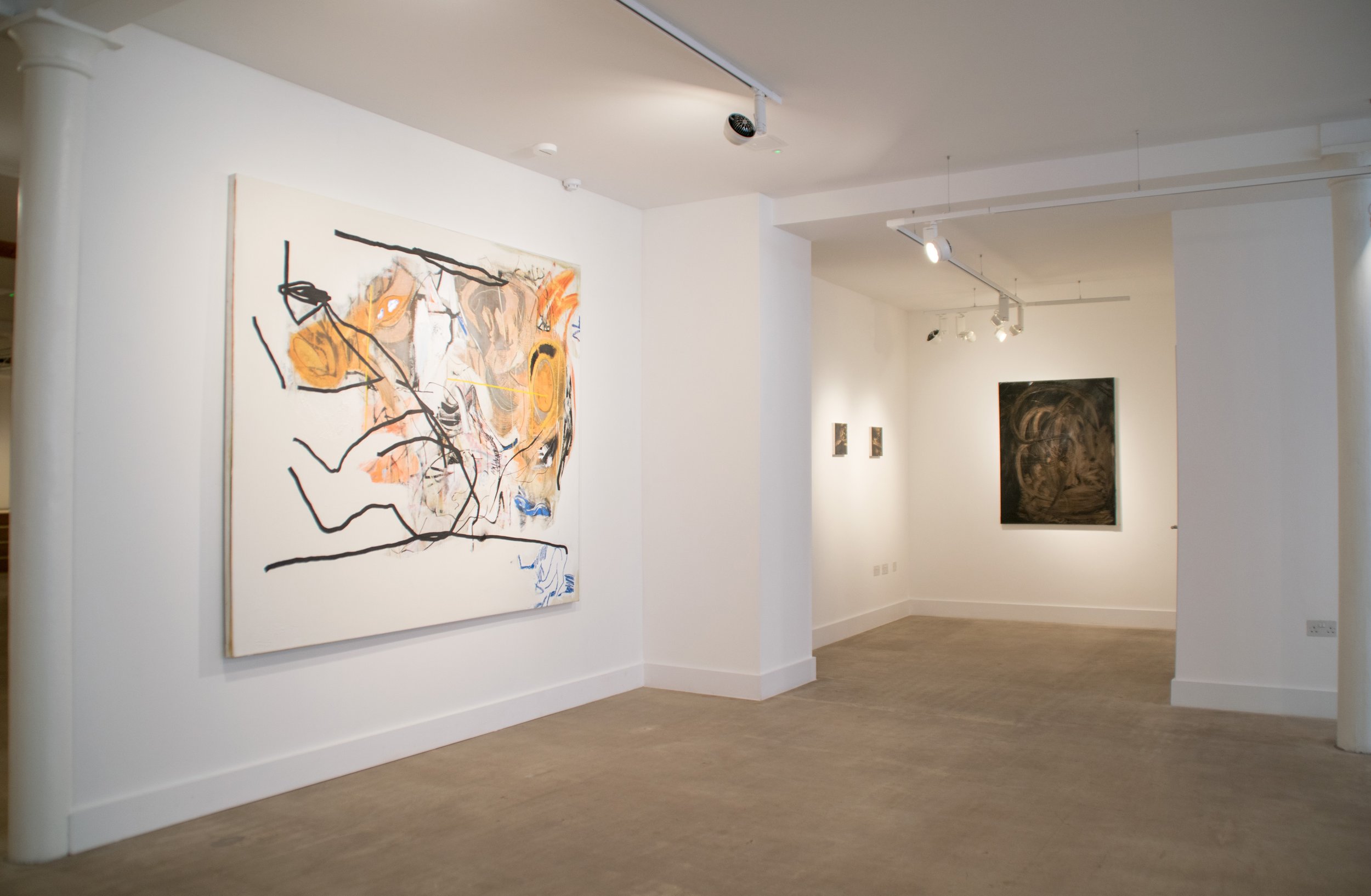Ceremony, No20 Arts, London UK
An event of ritual significance, performed on a special occasion. A physical demonstration, a material gesture testifying to an experience of limit, to the possibility of an encounter with the immaterial — an expression of the desire to ascend from the profane to the sacred. For the dissident surrealist French philosopher, George Bataille, however, the gesture of ritual instead articulated an anti-hierarchical impulse, a drive from the sacred to the profane. Writing during the interwar period — an ‘age of anxiety’ that prompted a fundamental recalibration of inner experience to the secular — Bataille’s provocative use of language embraced risk and chance to undermine cultural structures and articulate a particular silence, one loaded with the possibility of non-knowledge.
Under the tutelary spirit of Bataille, this exhibition will bring together a group of artists fascinated by how paint moves — both in terms of plastic immediacy and
subjective potential. Each refuses to discount a certain painterly-ness in their navigation of the absurdist’s no-man’s land between representation and abstraction. While such expressionist methods have frequently been castigated in recent painting practice, this exhibition aims to re-consider the materiality of gesture as site of meaning at the point where narrative and form collapse into subjectivity.
Painting has much of the ceremonial about it. Studio practice is riven with ritual — with the transubstantiation of pigment, canvas, panel, and oil. Image, such as it is, becomes contingent on a material act of faith, on a roll of the dice. While using disparate visual vocabularies, for these painters ceremony is a common language of chance, improvisation, and surface. Mike Ballard uses the territorial gestures that form the boundaries between public and private property to re-evaluate the visual codes and image hierarchies of contemporary urban society. While Erin Lawlor’s work uses the ductile and resistant character of paint itself to hold time at material tension through the oscillations of apparently perpetual gesture. Philip Gurrey’s painting explores the tension between gesture and surface via a vernacular of political slogans, art historical precedents and twenty-first century signifiers. Sarah Shaw employs a process of improvisation that allows her to excavate fragments of form to investigate memory as an abject state. Jim Threapleton explores the figurative possibilities of abstracton through historical remnants of vanitas painting and the kinetc, indeterminate potential of mark making.









